#ginkakuji temple
Explore tagged Tumblr posts
Text
Egyébként mivel az utolsó Kiotóban töltött napomon szakad az eső, így valószínűleg egészen estig csak posztolgatni fogok. Megmutatom például, hogy milyen fasza helyeken jártam tegnapelőtt. Kezdjük egy kis hanamival.
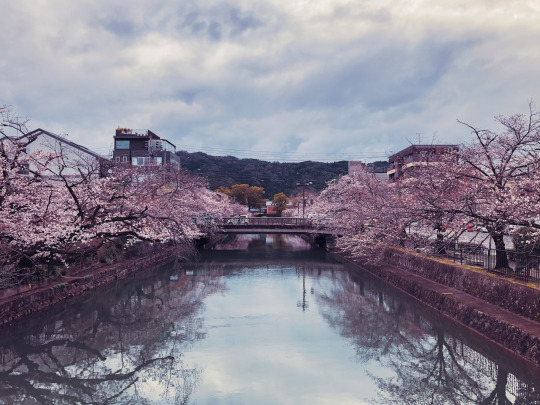
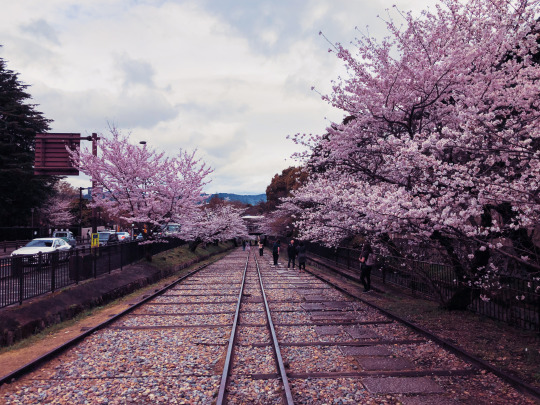

A napot a cseresznyevirágok megcsodálása után az Awata szentélyben kezdtem, ami igazán hangulatos, a belvárosi szentélyekhez képest jóval természetközelibb környezetben helyezkedik el, ahonnan gyönyörű kilátás nyílik, a legszebb látvány pedig egyértelműen a Heian szentély város fölé magasodó óriási toriija. A régi időkben ez a szentély (mármint az Awata) jelezte a Kiotót Tokióval (Edóval) összekötő út kezdetét és az utazók itt imádkoztak a biztonságos utazásért.

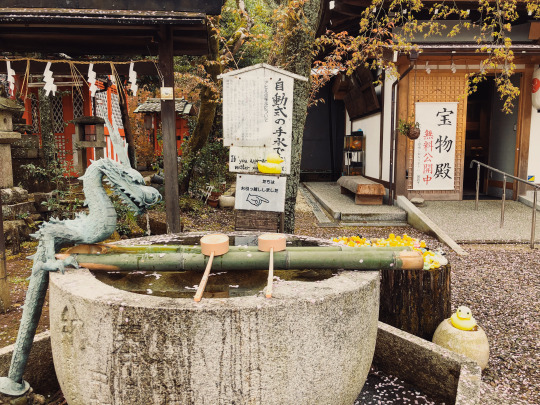
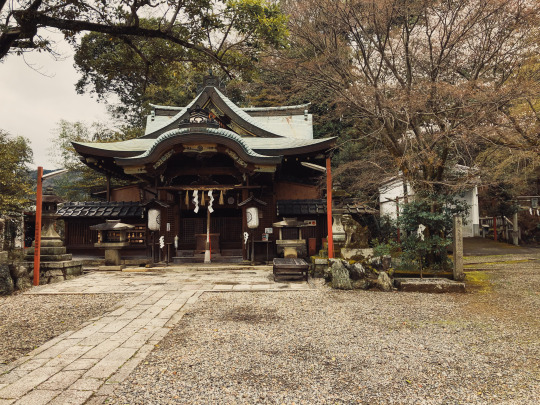
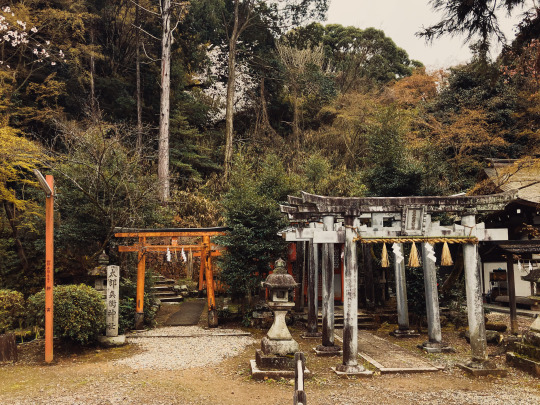


Ezután a Jinja után elindultam megnézni a Ginkakuji templomot, ami sokkal inkább esztétikai szempontból érdekelt. Útközben több helyen újra megcsodáltam a cseresznyevirágokat, többek közt a Filozófusok útjának nevezett sétányon is, ami most is gyönyörű, de belegondolni sem merek, mennyire gyönyörű lehetett mondjuk az 1800-as években.
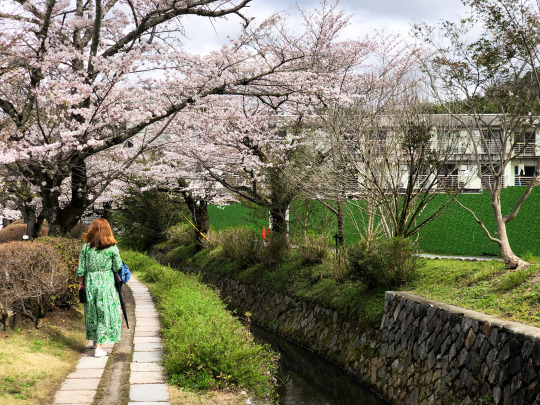


Visszafelé szintén a Filozófusok útján sétálva több szentélyt is találtam, ezek közül az első az Otoyo Jinja, ami három Kami, Sukunahikona no Mikoto, Sugawara no Michizane és Ojin császár otthona (és természetesen található itt egy gyönyörű Inari al-szentély is). Ez messze az egyik kedvencem lett, három okból is. Az egyik, hogy gyönyörű természetközeli környezetben található. A másik, hogy nagyon tetszettek a fő szentélyt őrző, különleges egérszobrok, amelyek eredete egy, a Kojikiben olvasható mítoszra vezethető vissza, ezen a blogon részletesen is olvashattok róla, szerintem nagyon érdekes történet. Harmadrészt pedig a világ egyik legkedvesebb papnőjével találkoztam itt, aki még angolul is szép napot kívánt elköszönéskor. Teljesen elolvadtam.



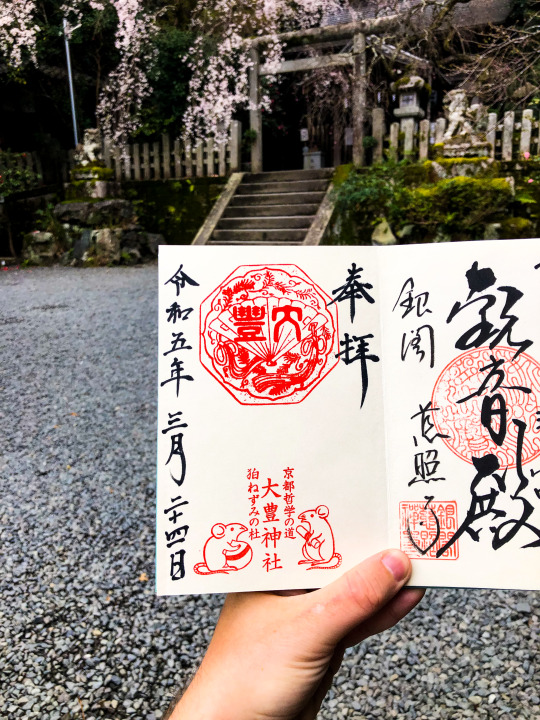


De nagyon szimpatikus volt a Kumano Nyakuoji Jinja is, ami a forgalmas turistaútvonal ellenére is csendes, nyugodt hely, szintén nagyon kedves papnővel. A Kiotóban található három Kumano szentély egyike. A Kumano szentélyek a három Kumano-hegy, Hongu, Shingu és Nachi Kamijainak adnak otthont. Több mint 3000 ilyen szentély található Japán-szerte.



Az Okazaki Jinja szintén egy nagyon kellemes élmény volt. Ez a szentély a korai Heian-korban épült azzal a céllal, hogy biztosítsa a császár és az akkori főváros védelmét. Nem véletlen, hogy Usagi Jinja-nak is nevezik, mert rengeteg aranyos nyúlfigura található a területén, akik a termékenységet és az egészséges gyermekáldást jelképezik, de az itt lakó Kamik, Susanoo-no-Mikoto és Kushinadahime-no-Mikoto hírnökei is egyben (mint ahogyan Inari Okami esetében a rókák).



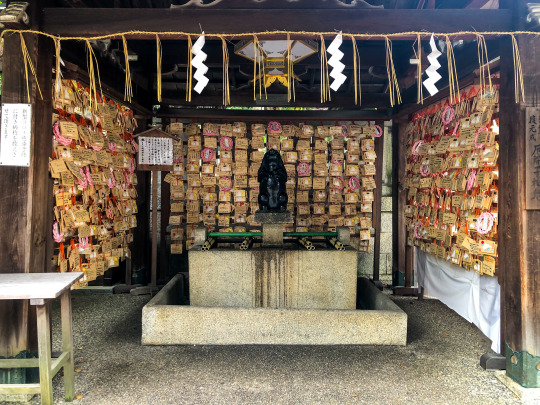

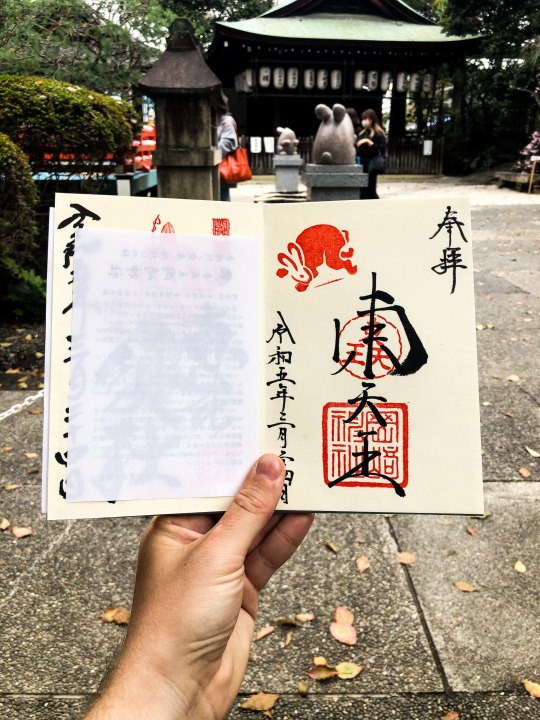
Végül pedig hazafelé meglátogattam az utamba eső második Kumano szentélyt is, ahol több Kami mellett Izanagit és Izanamit, a Japán szigeteit megalkotó Kamikat is tisztelik. Itt csengetés után jött ki a papnő az irodába, de nagyon kedvesen és készségesen fogadott.

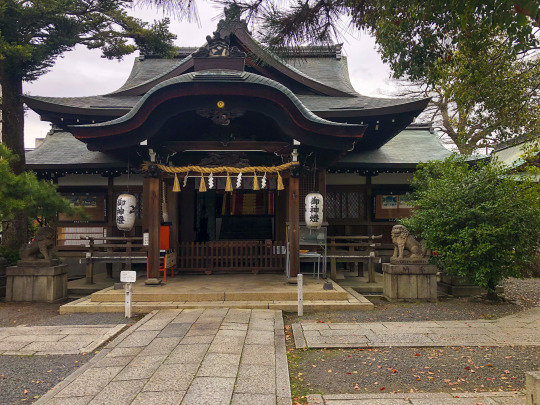
Nagyon szívesen beillesztenék még egy csomó szép képet, de a Tumbli egy posztba összesen 30-at enged...
Mindenesetre a Kiotóban töltött egy hétből ez volt az egyik legjobb és legeredményesebb nap. Nagyon hiányozni fog ez a város, és egészen biztos, hogy visszajövök még, mert rengeteg dolgot nem láttam, többek közt az Aranytemplomot, az Arashiyama bambuszerdőt és a majomparkot sem, köszönhetően az esőnek. Viszont annak továbbra is nagyon-nagyon örülök, hogy volt alkalmam geikot és maikokat is látni, nem is egyet! <333
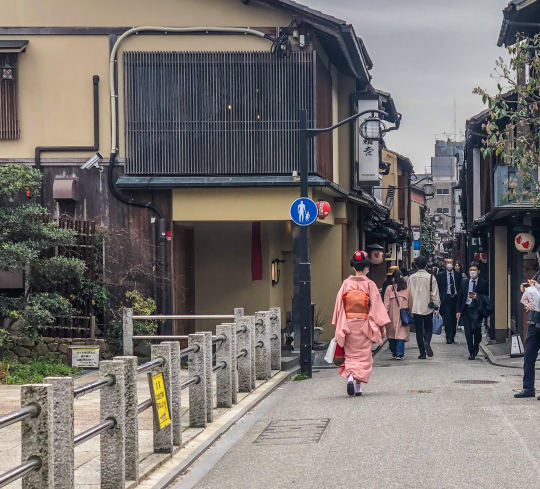
Holnap egyébként még lesz 12 óra amit el kell ütnöm, mert Tokióba éjszakai busszal utazom, szóval remélem, egy kicsit jobb idő lesz és mondjuk le tudom rakni a poggyászomat valami megőrzőben. Mindenesetre picit előre, de az egyik legjobb kiotói zenekar EP-jével búcsúzom a várostól, amibe szerintem egy kicsit szerelmes lettem.
youtube
Ja, és a kedves turistákat ismét szeretném megkérni arra, hogy ne kezeljék úgy ennek a gyönyörű városnak a csodálatos szentélyeit, mintha Disney Landben lennének. Egy Google keresés és nagyjából két kattintás rákeresni arra, hogy mit illik és mit nem egy ilyen helyen. Ez nem azt jelenti, hogy csak úgy nézelődni és megcsodálni a helyet ne mehetnél be, de szerintem jobb esetben egy templomban sem eszik például az oltár előtt az ember. Ha pedig le tudtál foglalni egy utat Japánba, akkor gondolom, ezt sem nagy erőfeszítés megtenni. Köszönöm!🙏🏻⛩️
#Japán#Japan#Kyoto#Kiotó#hanami#sakura#goshuin#Awata Jinja#Ginkakuji Temple#The Philosopher's Path#Otoyo Jinja#Kumano Nyakuoji Jinja#Okazaki Jinja#Usagi Jinja#Youtube
24 notes
·
View notes
Text
日本のトリビアまとめ #0012
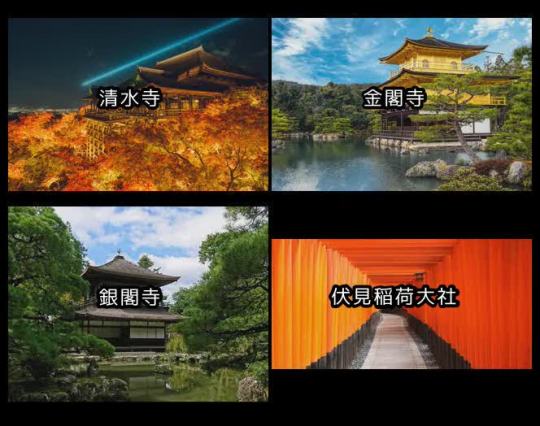
#Fushimi-Inari Taisha#Japanese Trivia#金閣寺#伏見稲荷大社#Kinkakuji Temple#京都の名所#Kiyomizu temple#famous places in kyoto#Ginkakuji Temple#清水寺#銀閣寺#日本のトリビア
0 notes
Photo

銀閣寺 京都の名所
銀閣寺(ぎんかくじ)は、京都市の東部、哲学の道周辺に位置する仏教寺院です。公式名称は「慈照寺(じしょうじ)」ですが、一般的には銀閣寺として知られています。 銀閣寺は、応仁の乱後に建立されましたが、初代将軍である足利義満の意向により、彼の死後にその別荘地として機能することになりました。義満は金閣寺(鹿苑寺)を建立しましたが、その弟子である応仁の乱の後、孫の足利義政が銀閣寺を建立しました。 銀閣寺の名前は、金箔で装飾された金閣寺とは異なり、元々は銀箔で装飾する予定でしたが、完成に至らず銀閣のままとなりました。そのため、「銀閣寺」と呼ばれるようになりました。 寺院の中心的な建築物は「銀閣」または「宝山楼」と呼ばれる、二階建ての建物です。上層に銀色の塗装が施されておらず、質素な外観を持っています。この建物は、美しい庭園と共に、周囲の景色と調和した風景を提供しています。 銀閣寺周辺には、哲学の道や慈照寺の庭園など、散策するのに適した美しい景観が広がっています。特に紅葉の時期には多くの観光客が訪れ、その風景の美しさが称賛されています。
♪♫♬🎤🎹🎶♪♫♬🎤🎹🎶♪♫♬🎤🎹🎶♪♫♬🎤🎹🎶
Ginkakuji Temple famous places in kyoto
Ginkakuji is a Buddhist temple located in the eastern part of Kyoto City, around Tetsugaku no Michi. The official name is Jishoji, but it is generally known as Ginkakuji. Ginkaku-ji Temple was built after the Onin War, but according to the wishes of Yoshimitsu Ashikaga, the first shogun, it became a villa after his death. Yoshimitsu built Kinkakuji (Rokuonji), but after the Onin War, his grandson Yoshimasa Ashikaga built Ginkakuji. Unlike Kinkaku-ji, which was decorated with gold leaf, Ginkaku-ji's name was originally planned to be decorated with silver leaf, but it was not completed and the name remained as Ginkaku-ji. Therefore, it came to be called "Ginkaku-ji". The main structure of the temple is a two-story building called ``Ginkaku'' or ``Hozanro.'' There is no silver coating on the upper layer, giving it a simple appearance. The building, along with a beautiful garden, offers a landscape in harmony with the surrounding landscape. The area around Ginkaku-ji Temple is full of beautiful scenery that is perfect for strolling around, such as the Philosopher's Path and the gardens of Jisho-ji Temple. Many tourists visit especially during the autumn leaves season, and the beauty of the scenery is praised.
0 notes
Text

My first ever painting on wood! This is Ginkakuji painted with acrylics on a wooden coaster! It's a birthday present for my colleague and office neighbour at my new workplace.
#traditional art#original art#seasons#autumn#autumn leaves#japan#sceneries#landscapes#kyoto#ginkakuji#temples#temples and shrines#acrylic painting#acrylics
7 notes
·
View notes
Photo

Ginkakuji
Kyoto, Japan
#ginkakuji#ginkaku-ji#kyoto#japan#asia#travel#travelling#silver pavilion#ginkaku ji#temple#architecture#garden#my photos
26 notes
·
View notes
Text
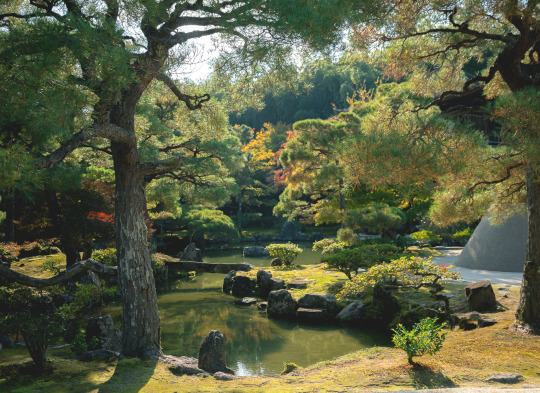
2 notes
·
View notes
Text
Photo by https://donsasuke.tumblr.com/post/768559402612670464

61 notes
·
View notes
Text
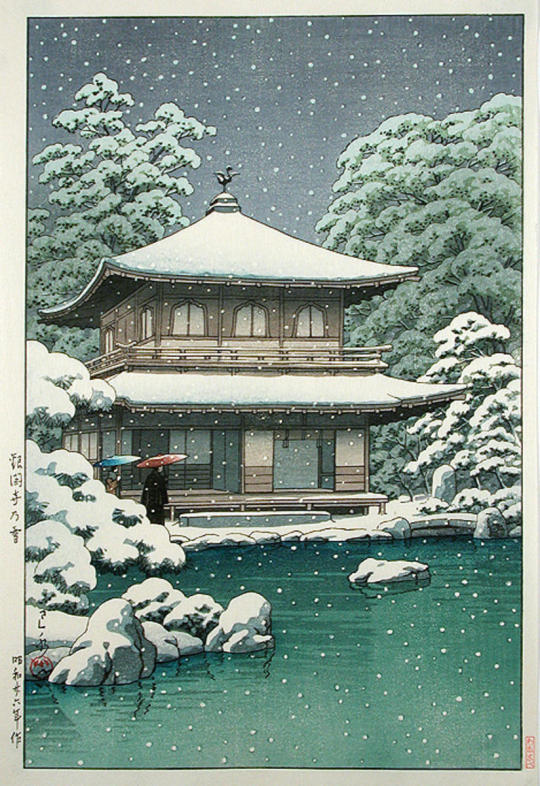
Snow at Ginkakuji Temple, Hasui Kawase, 1951
#art#art history#Asian art#Japan#Japanese art#East Asia#East Asian art#shin-hanga#woodblock print#Hasui Kawase#Kawase Hasui#landscape#landscape art#winter#winter scene#snow#Showa period#Showa era#20th century art
887 notes
·
View notes
Photo

The Muromachi Period (Muromachi Jidai, 1333-1573 CE) refers to the period of Japanese medieval history when the Ashikaga shogun capital was located in the Muromachi area of Heiankyo (Kyoto). Replacing the Kamakura Shogunate (1192-1333 CE), the Ashikaga or Muromachi Shogunate (1338-1573) would oversee a depressingly warlike, rebellious, and brutal period of history which saw incessant rivalries between warlords and unchecked bandits plaguing the countryside. There were a few bright spots such as the construction of the Kinkakuji and Ginkakuji temples in Kyoto as well as progress in trade and commerce, the arts and castle architecture. The period ended with the warlord Oda Nobunaga seizing power in 1568 CE and his decision to exile the last Ashikaga shogun in 1573 CE.
48 notes
·
View notes
Photo
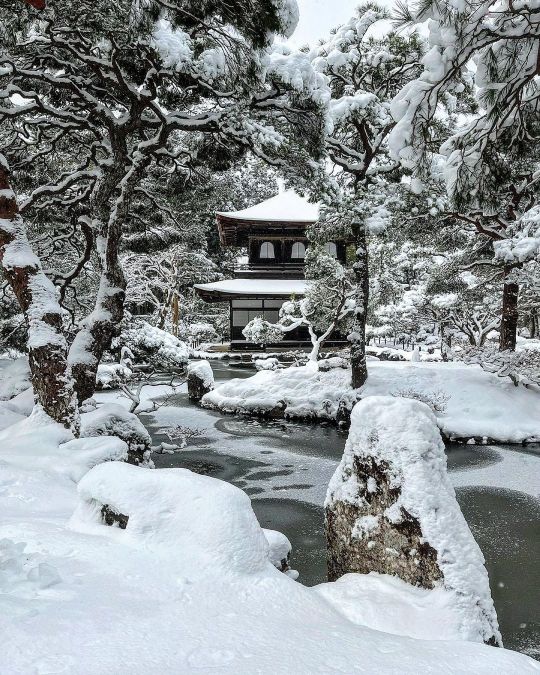
📸雪の銀閣寺(慈照寺)庭園(京都市左京区) Ginkakuji (Jishoji) Temple Garden (Snow), Kyoto ——If I were to visit Kyoto in the snow, I would go to Ginkakuji Temple!☃️ The Ginkakuji Temple is a World Heritage Site and National Treasure with its architectural roots in the Higashiyama-den Hall built by Ashikaga Yoshimasa, the 8th Shogun of the Muromachi Shogunate, and a Japanese garden designated as a Special Place of Scenic Beauty. Three "Amis" left their mark on the history of the garden... Soami, an artist of the Muromachi period, Zenami, a gardener, and Taiami Tanaka, a gardener of the Showa period. ——私は雪の京都なら“銀閣寺”派!☃️ 室町幕府8代将軍・足利義政 が造営した“東山殿”をルーツとする世界遺産・国宝の建築と、“庭の国宝”国の特別名勝に指定の日本庭園。 その庭園の歴史に名を残す3人の“阿弥”…室町時代の芸術家・相阿弥、庭師・善阿弥 、そして昭和の庭師・田中泰阿弥 。 今日は京都も暑かった…! けれどまだ雪シリーズ、続きます… ———————— ▼他の写真や解説のつづきは @oniwastagram のプロフURLかこのURLから。 For more photos and commentary, please visit @oniwastagram 's profile URL or this URL. https://oniwa.garden/ginkakuji-temple-kyoto-snow/ ———————— #worldheritage #japanesegarden #japanesegardens #kyotogarden #zengarden #beautifulkyoto #beautifuljapan #japanesearchitecture #japanarchitecture #japanarchitect #japandesign #jardinjaponais #jardinjapones #landscapedesign #kyototemple #庭院 #庭园 #庭園 #日本庭園 #京都庭園 #京都雪 #京都雪景色 #雪の京都 #世界遺産 #足利義政 #相阿弥 #善阿弥 #田中泰阿弥 #国宝 #おにわさん (Ginkaku-ji) https://www.instagram.com/p/CokJX_DP6ke/?igshid=NGJjMDIxMWI=
#worldheritage#japanesegarden#japanesegardens#kyotogarden#zengarden#beautifulkyoto#beautifuljapan#japanesearchitecture#japanarchitecture#japanarchitect#japandesign#jardinjaponais#jardinjapones#landscapedesign#kyototemple#庭院#庭园#庭園#日本庭園#京都庭園#京都雪#京都雪景色#雪の京都#世界遺産#足利義政#相阿弥#善阿弥#田中泰阿弥#国宝#おにわさん
8 notes
·
View notes
Photo

A view of the Ginshaden (Silver Sand Sea) at the Ginkakuji Temple in Sakyō-ku, Kyoto!
#Ashikaga Yoshimasa#Ginkaku-ji#Higashiyama Jisho-ji#Japan#Jishō-ji#Kyoto#Landscape#Photography#Temple of the Silver Pavilion#Winter#Zen#snow#yuki#慈照#東山慈照寺#相阿弥#銀閣寺
4 notes
·
View notes
Text
Photos: The Silver Pavilion
The Silver Pavilion, the Ginkakuji, is the quintessential zen garden. It’s actual name is the the Jisho-ji. It was a retirement villa for one of the Ashikaga Shogun, and became a Zen temple after his death. It was supposed to be the counterpart to the Golden Pavilion, Kinkakuji. The original plans were for it to be covered in silver leaf. However, for one reason or another, that never happened.…
0 notes
Text

The udon shop Nadai Omen has been in business for more than 50 years near Ginkakuji Temple in Kyoto since its establishment in 1967. The restaurant has a prestigious impression and is positioned as a long-established restaurant among the many udon shops in Kyoto. While up-and-coming udon specialty udon restaurants such as Yamamoto Menzou attract mainly young customers,Naidai Omen attracts a slightly older clientele.
I was curious to see what kind of udon noodles were available at the Nadai Omen Ginkakuji Head Shop, so I went to the restaurant one weekend before noon. Actually, I was on my way to the restaurant thinking “I want to eat curry udon…” but it seems that I was terribly mistaken…
Continue Reading... >> Nadai Omen Ginkakuji Head Shop
0 notes
Text
May 24 - Kinkakuji
Today was an even shorter day compared to two days ago. We woke up kind of early. I think I can’t even remember all that well to be honest. I ended up taking a nap at around four till about eight thirty so I’m already forgetting some of the stuff we did today. Anyways, we visited Kinkakuji this morning on our first full bus expedition of the trip and probably our last. Taking a bus is actually a lot more convenient than trains in my opinion just because of the flat fare and how little people were actually on them. Anyways, we got to Kinkakuji relatively early but it still had plenty of people walking all around. There were so many tourists gathered to see it that the whole corridor for walking was pretty much full. The temple was cool but it felt almost more yellow than gold. I was talking to our guide who was explaining to me about how there was a different temple called Ginkakuji or the silver pavilion. I honestly would rather go see that just because I like places with less people and the sheer amount of tourists was crazy today. I stopped midway through the walk to buy a hello kitty charm and by the time I looked up everyone was gone. I had to essentially run through the place to catch up to everyone but it took a good ten minutes to find someone. Me and our guide got stuck talking to some foreigners about the ice cream vending machines but I think they thought I lived in Japan my whole life because they were asking me what Japan was like pre covid. After Kinkakuji was Daitokuji which was only a 20 minute walk away. It was complete opposites to Kinkakuji in the amount of people. I saw about 6 tourists throughout the whole thing and it was amazing. We got an explanation on some of the sekitei or rock gardens and got to sit and meditate for a while. It was amazing. I just wish I wasn’t coughing as much as I was today otherwise I would’ve had a better time. After we broke for the day the usual group headed to a place called The Burger which gave us all a little taste of home. I got an Oklahoma style burger which I’ve been craving for the past week. The whole restaurant was Texas/Vegas themed which was really funny to see in Japan but it was pretty good so I was super content. After getting back to the hotel via bus I promptly took a quick shower and passed out for one of the best naps I have taken in a long while and I’m about to go right back to bed now.
Academic connection
Learning about the burning and restoration of Kinkakuji had my expectations more gravitated towards a more slightly broken image in my head. In all reality the restoration was seamless and looked amazing. I would have never been able to tell the building had burned down had I not read about it. It was kind of astounding thinking of the context that the building had as a preface. It really did seem to draw people in with its lustrous golden figure which was a sight to behold on its own. I could see how it could even go to drive some crazy. Past that we see Daitokuji which is known for its sekitei and elements of zen buddhism. The sekitei were wonderful to see and the guide lady told us what each little garden was trying to express. My favorite was a piece that she completely skipped over which was a little rock fashioned almost in the shape of a bowl that was holding water. There were bugs that would occasionally pass by and land for a sip of water or something but it was interesting to say the least. The gardens felt incredibly peaceful especially in the time when everyone was just not speaking. There was also a little part of the tour where the guide was explaining what I think was a poem to us which expressed kanji in a way I have never seen before. Buddhist teachings really can be clever with their expressions.

1 note
·
View note
Photo

Époque Muromachi
L'époque Muromachi (Muromachi Jidai, 1333-1573) désigne la période de l'histoire médiévale japonaise au cours de laquelle la capitale du shogun Ashikaga était située dans la région de Muromachi à Heiankyo (Kyoto). Remplaçant le shogunat Kamakura (1192-1333), le shogunat Ashikaga ou Muromachi (1338-1573) superviserait une triste période guerrière, rebelle et brutale, marquée par des rivalités incessantes entre seigneurs de la guerre et des bandits incontrôlés qui sévissaient dans les campagnes. Il y eut quelques points positifs, comme la construction des temples Kinkakuji et Ginkakuji à Kyoto, ainsi que des progrès dans le commerce, les arts et l'architecture des châteaux. La période se termina par la prise de pouvoir du seigneur de guerre Oda Nobunaga en 1568 et sa décision d'exiler le dernier shogun Ashikaga en 1573.
Lire la suite...
1 note
·
View note
Photo

Wandering about the gardens of Ginkaku-ji
Kyoto, Japan
#ginkakuji#ginkaku-ji#kyoto#japan#asia#travel#travelling#garden#nature#temple#silver pavilion#my photos
22 notes
·
View notes